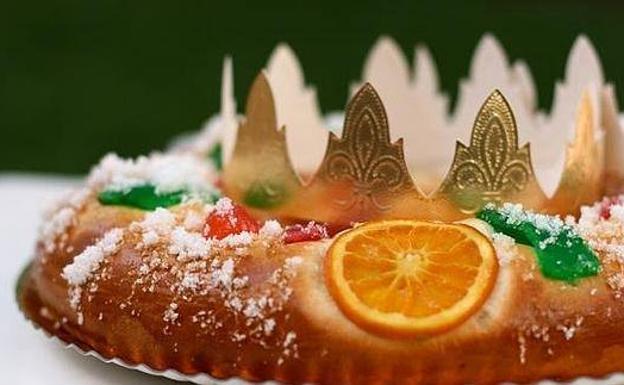On January 6, the Catholic epiphany is celebrated. The feast commemorates principally the visit of the Magi to the Christ Child, and thus Jesus’ physical manifestation to the Gentiles. It is called Three Kings’ Day – Día de los reyes magos. And it is a day when families and specially children receive Christmas presents. There are many ways to celebrate it, but many agree to have a cake for breakfast after opening the presents. Inside the Roscón de Reyes there is a surprise. This surprise has evolved from a bean to figurines of Christmas symbolism or a little baby Jesus. The one who finds the surprise becomes the “crowned” or the king.
There are different opinions about the origin of this custom. One is attributed to the Roman celebrations of the Saturnalia in winter, in which offerings were made along with cakes covered with figs and dates. Others tell a story about a French cook who wanted to surprise to Louis XV of France, making a cake with a surprise inside. This later became a tradition among the aristocracy. In France it is called galette des rois and is a round cake made of puff pastry and filled with almonds. In Spanish-speaking countries the Roscón de Reyes has an oval shape simulating a crown and the dough is a brioche style with citrus aromas, mainly orange.

In Spain it is called Roscón de Reyes, and is decorated with candied fruits, sugar and almonds. Sometimes filled with whipped cream. In other countries of America it is called rosca de reyes, and is decorated with quince, ate, cactus leaves, cherries and dried fruits. And it is eaten with hot chocolate or atole.
In the south of the United States, king cake is also consumed with great popularity. The tradition is the same, the celebration of the epiphany and the beginning of the Mardi Gras carnival season. Among many other customs, the locals attribute this cake to being of French origin, but the shape like a crown and the type of brioche-style dough, along with the sugar decoration is once again of Spanish origin
The rosca de reyes as we know today does not have a very long history. The first reference of a roscón with oval shape and dough similar to the one we find today in our tables dates from around 1880. Anyway, the season of the roscón de reyes has begun and I am looking forward to enjoying it.
¡Buen provecho!


